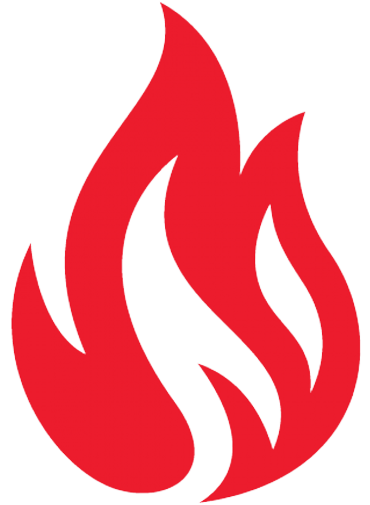What is the LEL for gasoline?
Lower Explosive Limit
The minimum concentration of a particular combustible gas or vapor necessary to support its combustion in air is defined as the Lower Explosive Limit (LEL) for that gas. Below this level, the mixture is too “lean” to burn….Lower and Upper Explosive Limits.
| Gas | LEL | UEL |
|---|---|---|
| Ethylene Oxide | 3.6 | 100 |
| Gasoline | 1.2 | 7.1 |
| Heptane | 1.1 | 6.7 |
| Hexane | 1.2 | 7.4 |
What does UEL mean in gas?
upper explosive limit
The highest concentration of a gas or vapor (percentage by volume in air) above which a flame will not spread in the presence of an ignition source (arc, flame, or heat). Concentrations higher than UEL are “too rich” to burn. Also called upper flammable limit (UFL).
What is the significance of the UEL what about the LEL?
The maximum concentration of a gas or vapor that will burn is defined as the Upper Explosive Limit (UEL). Anything above this level is considered too rich to burn. There is too much gas present and not enough air. But between the range of the LEL and the UEL, combustible and flammable gases will burn or explode.
What is LEL & UEL of natural gas?
The minimum concentration of a particular gas necessary to support its combustion in air is defined as the Lower Explosive Limit (LEL). Below this level, the mixture is too “lean” to burn. The maximum concentration of a gas or vapour that will cause an explosion is defined as the Upper Explosive Limit (UEL).
What is LEL and UEL of natural gas?
The lower and the upper explosion values (LEL and UEL) define the required level of concentration by type of gas. Explosions will occur for gas concentrations within the LEL and the UEL value, not above or below, and the maximum explosive power will be for concentration at the midpoint of the flammable range.
What is LEL and UEL of LPG?
LEL : 1.8 % UEL : 12.8 % TDG FLAMMABILITY: FLASH POINT (°C): -76 AUTO IGNITION. Page 2. MSDS: LPG.
How do you calculate UEL and LEL?
To compute the LEL of any gas in air, divide the unknown concentration by the LEL listed in the NFPA Handbook. 100% LEL’s for 9 of Gasco’s more common gasses are shown in the Table 1A here. For example, if you take 2.5% Methane in air and divide it by 100% LEL of methane (5%), the result is 50% LEL.
What is the UEL for hydrogen gas?
LEL UEL CHART
| Gas | LEL | UEL |
|---|---|---|
| Hydrogen | 4.0 | 75.0 |
| Hydrogen Cyanide | 5.6 | 40.0 |
| Hydrogen Sulfide | 4.0 | 44.0 |
| Isobutane | 1.8 | 8.4 |
Is gasoline combustible or flammable?
Flammable
Gasoline is termed Flammable because of its Low Flashpoint and High Vapor Density. Kerosene and Diesel Fuel are termed Combustible because their Flashpoint is greater than 100 degrees F. Gasoline produces ignitable vapors that are 3 to 4 times heavier than air and can travel for great distances along the ground.
What gas class is gasoline?
A national fire coding classification of liquids, such as gasoline, heating oil, and diesel fuel, as being either flammable liquids like Naptha or combustible liquids. Typical Class I liquids include butyl alcohol, diethyl glycol, styrene, and turpentine.
Do gasoline vapors rise or fall?
Gasoline vapors are denser than air, meaning these vapors will sink and collect at the lowest point. Effective air circulation may help disperse gasoline vapors. An open flame is not necessary to ignite gas vapors; one spark can cause gasoline vapors to ignite.
Which two of the hazard below apply to gasoline?
SUSPECT CANCER HAZARD. Suspected of causing cancer. ASPIRATION hazard.
Is gasoline vapors heavier than air?
Gasoline produces ignitable vapors that are 3 to 4 times heavier than air and can travel for great distances along the ground. Gas vapors tend to accumulate in low or enclosed spaces. These vapors can then be ignited by a nearby open flame, such as a pilot light of a water heater.
Is gasoline considered an explosive?
In a conventional sense, therefore, gasoline is highly explosive, though, from a chemical standpoint, it is not explosive in itself.
What hazard classification is gasoline?
General fire hazards Extremely flammable liquid and vapor.
What type of hazard is gasoline?
Aspiration hazard. May be drawn into the lungs if swallowed or vomited, causing severe lung damage. Death can result. Effects of Long-Term (Chronic) Exposure: Can cause dry, red, cracked skin (dermatitis) following skin contact.
What happens if a gas is heavier than air?
LPG is heavier than air. Butane is a bit more than 2 times heavier than air. Butane gas weighs 2.5436 kg/m³ whilst air weighs 1.225 kg/m³. Propane is 1.55 times heavier than air….LPG Density – Is LPG is Lighter than Air.
| Is LPG (Propane & Butane) Lighter or Heavier than Air | ||
|---|---|---|
| Gases | Propane | Butane |
| Density (Air=1) | 1.55 | 2.006 |
Why is gasoline not flammable?
Gasoline as a liquid does not burn – it is the vapors that the liquid gives off that burns. Vapors usually cannot be seen but frequently travel long distances to a source of ignition. Thus the gasoline can be located a great distance from an actual ignition source.
Is gasoline explosive or FLAMMABLe?
What is the packing group for gasoline?
Packing Group II
Gasoline, or, ethanol and gasoline mixtures, for use in internal combustion engines (e.g., in automobiles, stationary engines and other engines) must be assigned to Packing Group II regardless of variations in volatility.
